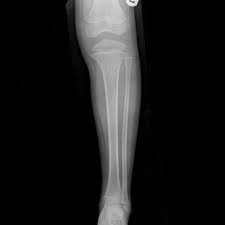
17 Sep Don’t Let a Stress Fracture Stress You Out – We Give You the Inside Scoop on This Common Injury
The term “stress fracture” sounds alarming and can be enough to stress you out in general; however, it’s a relatively common injury, depending on your sporting and fitness activities. We tell you what the symptoms are, how to prevent them, and how to treat a suspected stress fracture. The good news is that with the right treatment, you can avoid worsening your injury and improve your healing time.
The Stress Fracture
A stress fracture is an actual fracture in a bone – but unlike a traumatic or acute injury in which you’ll have no doubt that you sustained a possible broken bone, a stress fracture can sneak up on you. A stress fracture is typically an overuse or over-training injury that appears in the lower leg bones, the feet, or even the spine. It’s essentially a crack in the bone that can cause discomfort, pain, and swelling – but hasn’t (yet) reached the point of a fully broken bone.
How You Get Them
Stress fractures result often because the forces placed on the bone are in excess of what the bone can handle. They’re seen frequently in runners, but weight lifters, gymnasts, and other sports see stress fractures as well. Poor form and poor footwear can also contribute to an increased risk of stress fractures. For instance, if you’re used to running in standard running shoes and switch to minimalist shoes without adequate transitional time, you could end up with a stress fracture. Weight lifters with poor form can also cause experience stress fractures in the spine.
Diagnosis
Unlike a clean break that is clearly visible on an x-ray, stress fractures can be a little tricky. They may not be immediately visible to your doctor or medical provider on imaging. It often takes time for this type of fracture to show up on an x-ray; they are often more visible once some healing has begun. You’ll likely have very localized pain and even some swelling over the area of the stress fracture. You’ll also experience pain/discomfort during your sports/fitness activity and it will feel better with rest. Your provider will base his/her diagnosis and treatment off your symptoms and a thorough exam.
Treatment & Prevention
Seeking treatment for a suspected stress fracture is important; left untreated a stress fracture can progress to a full fracture of the bone that will require significantly longer healing time and treatment. After an initial mandatory rest period that will allow the bone to heal, which can be anywhere from 6-8 weeks or more, a course of physical therapy may be warranted. A physical therapist can help you with any factors that may have contributed to the stress fracture and also help you with proper form, balance, flexibility, strength, and more to help prevent future stress fractures. Also, ensuring that you train properly is key: watch doing “too much, too soon” and ensure that you have appropriate footwear (when applicable). Your PT can go over your training routine and make recommendations that will help reduce your injury risk.
If you’re stressed out over a stress fracture and ready to get back into the swing of things, put Body One Physical Therapy on your team. We’re locally owned with four convenient locations to best fit your busy schedule: North Indianapolis, South Indianapolis, Fishers, and Zionsville. One of our experienced, compassionate providers will work with you to identify your goals and design a personalized treatment plan to get you heading in the right direction: toward your recovery. Call us today!




